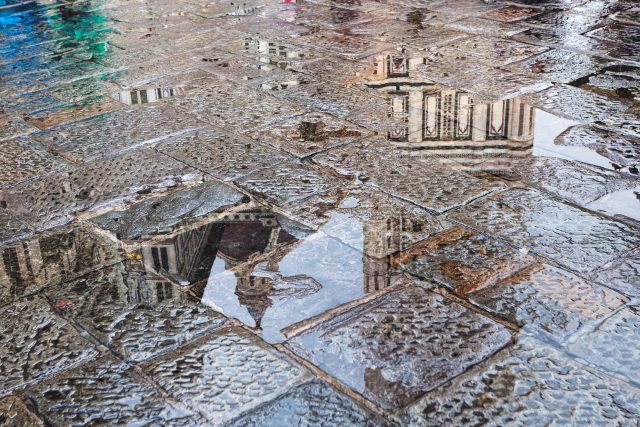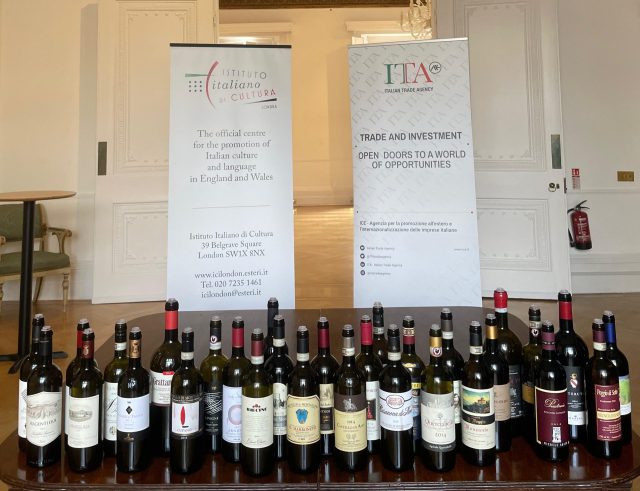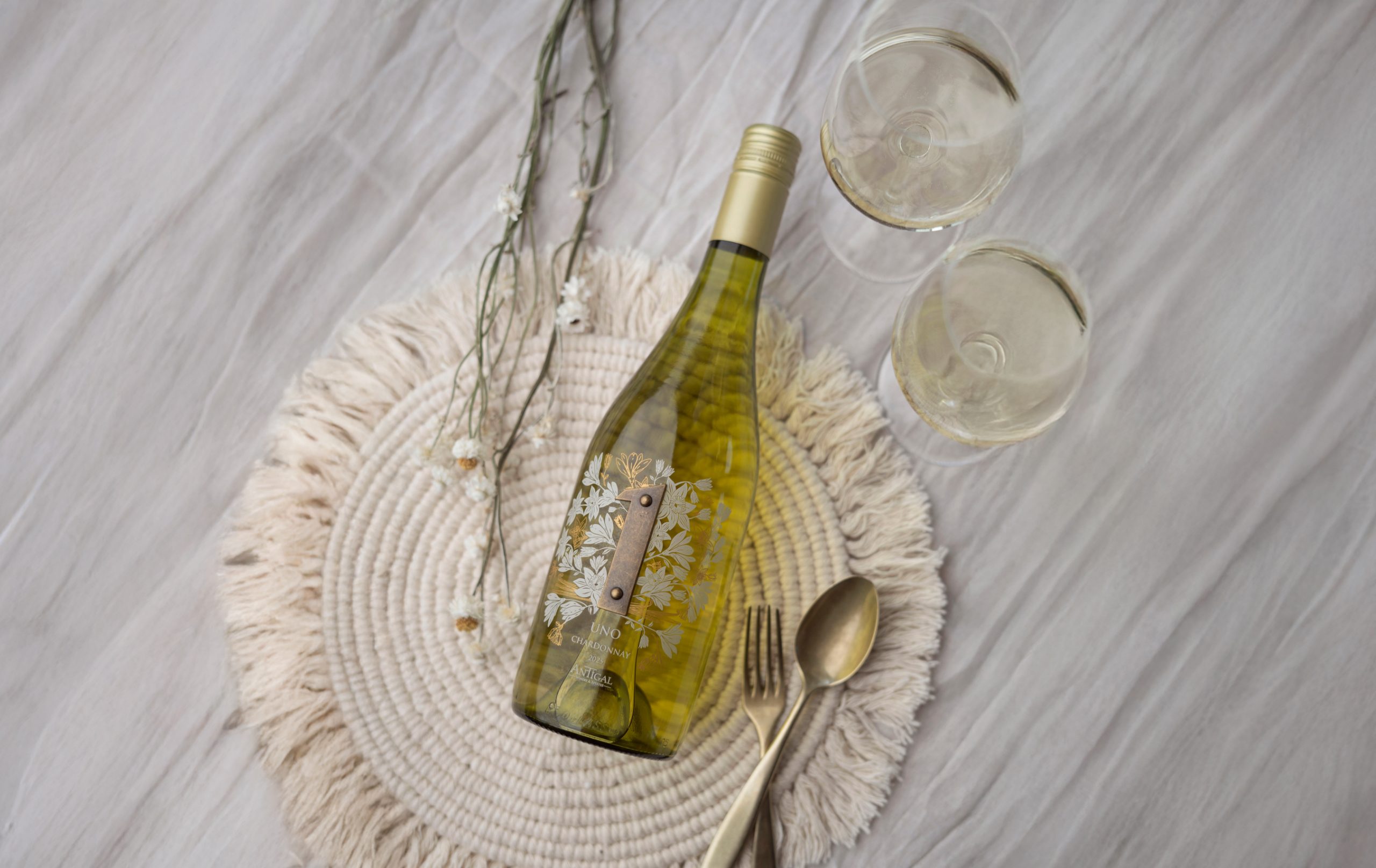Tuscany 2014: damp squib or hidden gem?
A landmark tasting held in London last week posed the question of whether Tuscany’s rain-soaked 2014 vintage needs re-evaluating. Louis Thomas reports.

Hosted at the Istituto Italiano di Cultura di Londra in partnership with the Italian Trade Agency, the event, curated by Nelson Pari, Italian wine buyer for SWIG, and Federico Moccia, head sommelier at 67 Pall Mall, provided a retrospective of 30 Tuscan wines from a vintage that is undergoing something of a critical reappraisal in Italy.
“When the Italians talk about ‘old school’ vintages where it was impossible to make wines because it was raining all the time, that was 2014,” explained Pari. “Generally, as a Mediterranean climate, we don’t expect heavy rainfall in the summer, and since ‘14 we haven’t had anything like it. It is a unicum for Italy. The 2003 vintage was the real change for Italy, it was incredibly hot and people started to think about climate change – 2010 and 2011 were really hot, 2012 was balanced, 2013 was elegant, and then 2014 arrived and nobody was ready for it. ‘14 can be hit and miss, but for the Italian market recently it has been more of a hit than a miss.”
“In Italy, when we have what a critic might call a ‘bad vintage’, that’s a balanced vintage, like ‘18 or ‘20 – so ‘14 is the last one that the critics really slammed. But many Italians now order ‘14 because it’s the one that’s ready to drink now. It is subtle, and the palate might be slightly watery in some wines, but generally they are at their peak – though that doesn’t mean they can’t age further,” he added.
Water was the defining feature of the 2014 growing season, with numerous reports of landslides in the region, and Sangiovese, Tuscany’s most widely-planted variety (and Italy’s for that matter), has a tendency to accumulate it.
“What we wanted to do with this event was both show the longevity of Italian wine, and show how 2014, which was much criticised at the time, is more like the vintages of the ‘70s or ‘80s. Acidity, freshness, crunchiness – just ripe fruits,” suggested Moccia. “Sometimes you try certain vintages straight away, and then you try them again and see how they develop, and the beautiful tertiary aromas come through.”
It may have actually been the dampness of the vintage which gave the wines the acidic backbone to age over the coming decade – as the 30 wines selected by Moccia and Pari demonstrated.

Chianti Classico
One Chianti Classico that was featured in the lineup was that produced by Riecine, a 100% Sangiovese that spent 12 months in tonneau. It was rumoured that a consultant at Riecine considered throwing out its 2014 harvest, but Alessandro Campatelli, who became the estate’s director in 2015 and, as of this month, has become its owner, saved it.
“For me 2014 is very similar to 2024 – a lot of rain during the harvest, so we had to wait for the grapes to dry before picking,” argued Iacopo Casadio, head of hospitality and communication. “It was a very long harvest. Seven, eight-years-ago we thought ‘14 was good, but not suited for long ageing in the bottle, but today is the best moment. It has a very typical nose of Sangiovese from Chianti Classico – fresh, and easy-drinking.”
On his recent trip to Chianti Classico, db editor-in-chief Patrick Schmitt MW also found that were producers who draw parallel’s with this year’s vintage and that of 2014.
The Consorzio Vino Chianti Classico diplomatically refers to 2014 as a “very particular vintage” which produced wines with a “a non-conventional personality” – the consorzio notes that weather conditions improved from September, allowing the fruit to adequately ripen, and that the quantity production was actually above average.
Montalcino
2014 was rated as a three star vintage (‘good’) by the Consorzio del Vino Brunello di Montalcino – one of the lowest of the last few decades, with only the two star (‘fair’) 2002 ranked lower.
“When 2014 was released onto the market it was perceived as a secondary vintage, because normally when we look for high-end Brunello vintages, we traditionally look for vintages that have structure and concentration. 2014 did not have that weight, and it was rated slightly less,” said Col d’Orcia’s Santiago Marone Cinzano.
However, for Cinzano, who was there to present Col d’Orcia’s 2014 Brunello di Montalcino, which spent 36 months in big botte, context is king.
“2015 was a big vintage with wide shoulders, and was well-rated – but if you’re at the beach in Positano eating vitello tonnato, Brunello ‘15 is not a five star vintage, it will overpower and send you to bed,” he argued. “In that case, the ‘14 is better. Contrarily, if it’s winter and you’re by the fireplace, ‘15 will not satisfy you – the new generations understand that rating a vintage does not work as well as describing it.”
From the 2020 vintage, which has its London en primeur next month, onwards, the consorzio is actually abandoning the star-rating system.
“I need to tell you that the ‘14 is more acid-driven, it’s fresher, it’s a more versatile bottle of wine. 2014 has evolved just like any other Brunello, but it stands out for its unique characteristics – it’s an issue of marketing.”
Partner Content
According to the Consorzio del Vino Brunello di Montalcino, 2014’s production of Brunello was down 30% on the average, with just six million bottles produced.
Bolgheri
In what might be considered a case of grim irony, the cradle of the Super Tuscans was thrust back into the spotlight by rainfall only last month, as Bolgheri was battered by torrential rainfall which saw a staggering 200mm of rain, about a third of the region’s annual total, fall in just two hours.
By contrast, 2014 was a less dramatic, but similarly wet in terms of total precipitation across the year.
“2014 was a challenge for producers to implement the right interventions in the vineyards and in the cellar – it was supposed to be a very diluted vintage. The wines were softer in body than we might wish for from an optimal vintage,” shared Tenuta Argentiera marketing manager Daniele Gozzi. “The main intervention concerned timings – we didn’t have sunshine in July and it rained a lot in August, so we had to know how and when to treat the vineyards. Canopy management was really important, and deciding when to pick was essential.”
Once things had dried up, picking commenced on 6 September with the Vermentino and some early Merlot – around the time when it might normally occur, though ‘normal’ is something that is increasingly hard to find due to climate change, with the fresher 2018 and 2020 vintages, and hotter years of 2021 and 2022 causing agronomists to fret.
“You can’t really say ‘this year is going to be like that’ – in the agricultural world you have to deal with what Mother Nature gives and takes every vintage,” suggested Gozzi. “Technology can help us get ahead and see what will happen in a couple of day’s time. 40 years ago it wasn’t like that: if you had a bad vintage, that was it.”
“The nice thing now is to open the bottles and see the quality, and feel less frustrated than we did ten years ago.”
The particular bottle of the producer that had been picked for the tasting was its Bolgheri Superiore Argentiera, a blend of 40% Cabernet Sauvignon, 40% Merlot and 20% Cabernet Franc which aged for 14 months in barrique.
“‘2014 was a vintage that nobody wanted when it happened, but it was a formative moment, and it can help us to feel less stressed about 2024!”
He revealed that, thanks to the estate’s position on a hill, Argentiera was not affected by flooding caused by last month’s downpour.
Will we ever see a vintage like 2014 again?
That was the question posed to Gozzi, who replied: “Who knows. We really can’t hide from addressing the fact that climate change is happening. You can’t prevent it, you have to work with it. This year it was Bolgheri, it could be somewhere else next year.”
While Pari does not have a crystal ball, to my knowledge, he and Moccia do keep track of climatic conditions across Italy, though episodes of extreme weather are hard to predict with any accuracy.
“2014 was the bad vintage of the past, and if it happens in the future, it would be really rare – so far we haven’t seen one like it since,” said Pari. “If it is going to happen, it will be climate change-related, with big hail, or heavy rain like what we have seen in Bolgheri this year, but the big rainfall happening now is a moment. 2014 was also dominated by a rainy winter, which is even weirder as we don’t get many rainy winters any more.”
“A vintage like 2014 will probably come again,” argued Moccia, “but what’s important is that producers now know how to better manage their vineyards when it does. It’s not just the vintage, but what is done during the vintage.”
For Pari, the watershed moment in Italy actually came two years later: “Most of the modern style of Italian winemaking comes after 2016, with a lot of experimentation between 2003 and then – ‘14 was about winemakers trying to save what they had.”
“What we are excited about with the 2024 vintage is that, though these are really hard vintages, you will need people who know how to taste wine to understand them – the grapes are still healthy. Back in the day, what you read from the vintage exactly matched the wine, but that might not be the case from ‘22 onwards. For Italy it’s crazier than ever,” he concluded.
Expectations for the quality of Tuscany’s 2024 vintage seem fairly high in spite of the difficulties, though perhaps come 2034 there will be a similar re-examination – as this tasting demonstrated, 10 years is a long time, even in wine.
Related news
Behind the label: Alto Adige and the question of language




